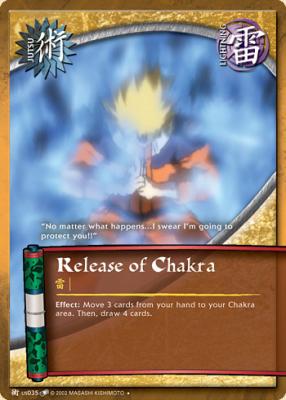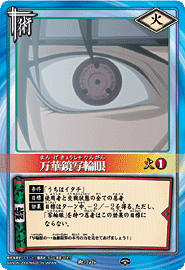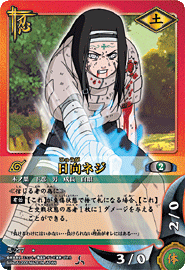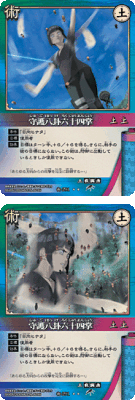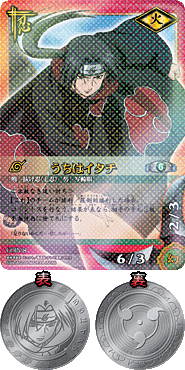Fuchslegenden in Vietnam, China und Japan
Kyubi Kitsune
Kyubi means nine tails and Kitsune means fox. So Kyubi Kitsune means nine tailed fox. In the series, that is the great youma that attacked the Village of the Leaf 13 years ago. In many Asian cultures though, the fox spirit is quite dominant in their legends and mythologies.
Fox spirits in Chinese legends
Chinese mythologies bear the origin of Foxes as demons and spirits, which plays a key role in many of the Chinese mythologies.
One of the most famous series of Chinese supernatural folklore is the 'Liao Zhai' Tales. Many of the stories in 'Liao Zhai' and other Chinese legends describe the fox, who after meditating hard in mountain caves for centuries, attain magical shape-shifting powers.
The Chinese fox spirits normally acquire the form of a young beautiful provocative woman. They are often conniving and evil, seducing men for their 'yang energy' to help them gain immortality. Because of these strong Chinese legends of the fox demons, females who have an affair with married men are often referred to as fox spirits or 'hu li jing'.
Although most legends condemn fox spirits as vicious demons, there are stories that put the fox in a more tender position, whose simple desire was basically to seek a companion to share the human experience of love and happiness, but faces the tragic condemnation and punishment after their identities are discovered.
Fox spirits in Japanese legends
Legends of the fox spirit reached Japan during China's Tang Dynasty. One of the Japanese mythologies talk about how the fox spirit flew to Japan from China. The fox, together with the badger, has shapeshifting powers and became a distinct icon in Japanese folklore. That probably inspired the climatic fight between Naruto and Gaara in the form of a fox and a badger respectively during the Sand's invasion of the Leaf.
British writer Neil Gaiman retold an ancient Japanese folklore "The Fox, the Monk, and the Mikado of All Night's Dreaming" in his one of his Sandman stories: "The Dreamhunters". The tale starts with a bet between a badger and fox shapeshifter. The fox shapesifts into a woman and falls in love with the monk, winning whatever worldly affection the monk was capable of giving. The story is an example of the fox and the badger's significance in Japanese culture and also an example of the link between fox spirits and the female figure.
Fox spirits in Vietnamese legends
The fox traveled to Vietnam from China too. One of the legends has it that Lac Long, the forefather who found Vietnam fought with a great nine-tailed fox demon. Lac Long won the battle and slew the fox, creating Hanoi's West Lake, mythologically referred to as the "Sea of the Body of the Fox".
* Source: Narutofever at Kyuubi Kitsune *
Kyubi means nine tails and Kitsune means fox. So Kyubi Kitsune means nine tailed fox. In the series, that is the great youma that attacked the Village of the Leaf 13 years ago. In many Asian cultures though, the fox spirit is quite dominant in their legends and mythologies.
Fox spirits in Chinese legends
Chinese mythologies bear the origin of Foxes as demons and spirits, which plays a key role in many of the Chinese mythologies.
One of the most famous series of Chinese supernatural folklore is the 'Liao Zhai' Tales. Many of the stories in 'Liao Zhai' and other Chinese legends describe the fox, who after meditating hard in mountain caves for centuries, attain magical shape-shifting powers.
The Chinese fox spirits normally acquire the form of a young beautiful provocative woman. They are often conniving and evil, seducing men for their 'yang energy' to help them gain immortality. Because of these strong Chinese legends of the fox demons, females who have an affair with married men are often referred to as fox spirits or 'hu li jing'.
Although most legends condemn fox spirits as vicious demons, there are stories that put the fox in a more tender position, whose simple desire was basically to seek a companion to share the human experience of love and happiness, but faces the tragic condemnation and punishment after their identities are discovered.
Fox spirits in Japanese legends
Legends of the fox spirit reached Japan during China's Tang Dynasty. One of the Japanese mythologies talk about how the fox spirit flew to Japan from China. The fox, together with the badger, has shapeshifting powers and became a distinct icon in Japanese folklore. That probably inspired the climatic fight between Naruto and Gaara in the form of a fox and a badger respectively during the Sand's invasion of the Leaf.
British writer Neil Gaiman retold an ancient Japanese folklore "The Fox, the Monk, and the Mikado of All Night's Dreaming" in his one of his Sandman stories: "The Dreamhunters". The tale starts with a bet between a badger and fox shapeshifter. The fox shapesifts into a woman and falls in love with the monk, winning whatever worldly affection the monk was capable of giving. The story is an example of the fox and the badger's significance in Japanese culture and also an example of the link between fox spirits and the female figure.
Fox spirits in Vietnamese legends
The fox traveled to Vietnam from China too. One of the legends has it that Lac Long, the forefather who found Vietnam fought with a great nine-tailed fox demon. Lac Long won the battle and slew the fox, creating Hanoi's West Lake, mythologically referred to as the "Sea of the Body of the Fox".
* Source: Narutofever at Kyuubi Kitsune *
don_paolo - Di, 18. Mär, 05:29

